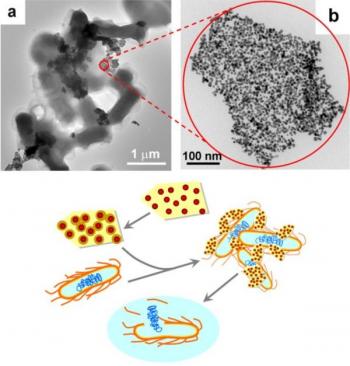Researchers from the University of Science and Technology of China (USTC) discovered that protein-coated graphene oxide can be used to create efficient anti-bacteria agents. The GO sheets were used as a template to guide silver (or Au@Ag core-shell particles, to be exact) into a 2D array. In this configuration, the silver is much more efficient that with with individual nanoparticles and silver ions.

Mechanical studies showed strong adhesion of the 2D Au@Ag nano-assembly on the cell surface, which cause an aggregation and cellular lysis of the bacteria. The increased local concentration of silver around the bacteria and the "polyvalent" nanoparticle-bacterium interaction were both critical.
This new research shows yet again how graphene may be useful to fight bacteria. Just last month we reported that graphene can kill bacteria by slicing through their membranes and pulling out their phospholipids. Back in September 2012 it was reported that graphene-based materials kill substantially more bacteria than graphite-based materials. In February 2013 it was reported that graphene can be used for photothermal antibacterial therapy, and earlier studies demonstrated how graphene can be used as a bacteria sensor.